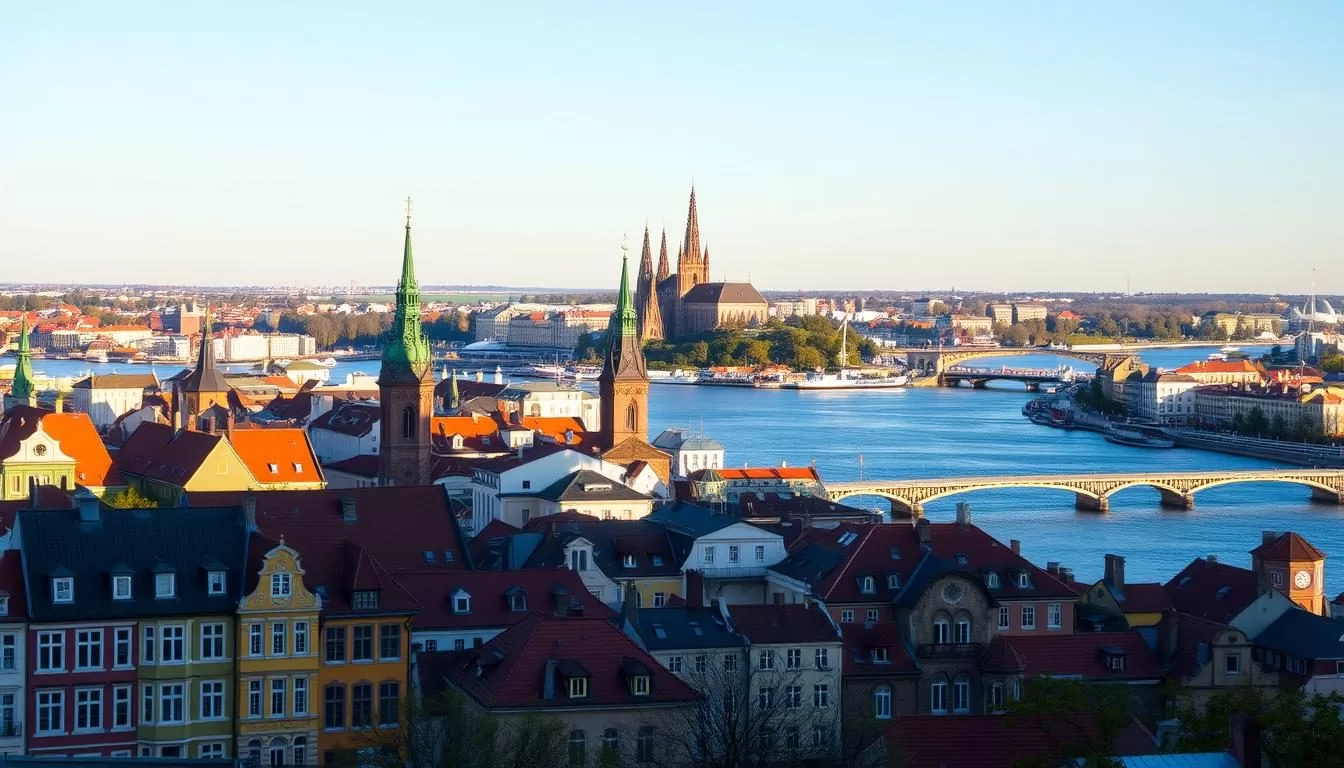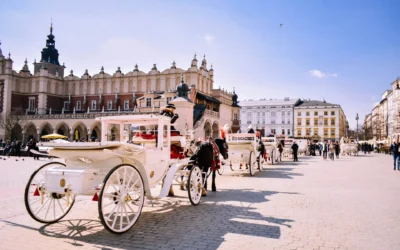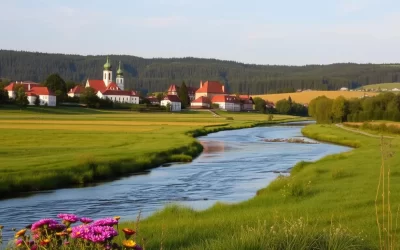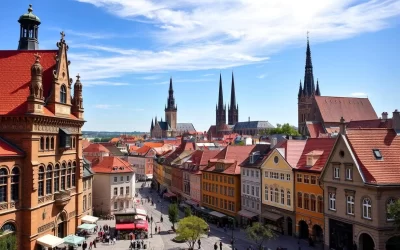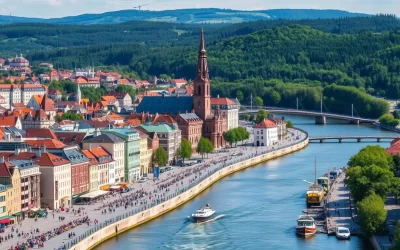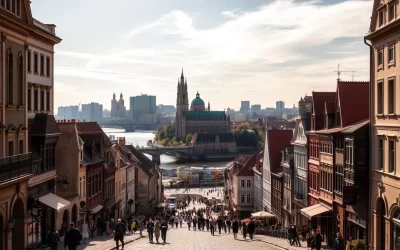1. Warsaw (Warszawa) – 1,860,000
Poland’s capital, known for its modern skyline and historical old town.
2. Kraków – 790,000
Historic royal city famous for Wawel Castle and medieval square.
3. Łódź – 660,000
Former industrial hub with revitalized factories and street art.
4. Wrocław – 645,000
City of bridges and gnomes with a charming old town.
5. Poznań – 540,000
Business and cultural center known for Renaissance architecture.
6. Gdańsk – 490,000
Historic port city on the Baltic Sea with a rich Hanseatic past.
7. Szczecin – 398,000
Port city with German influences and maritime character.
8. Bydgoszcz – 340,000
City of music and waterways in northern Poland.
9. Lublin – 330,000
Eastern city known for its castle and multicultural heritage.
10. Białystok – 290,000
Cultural hub of northeastern Poland near Belarus.
11. Katowice – 285,000
Industrial city now focused on business and events.
12. Gdynia – 245,000
Modern port city and part of the Tricity with Gdańsk and Sopot.
13. Częstochowa – 215,000
Pilgrimage site home to the Black Madonna at Jasna Góra.
14. Radom – 205,000
Central Polish city with industrial roots.
15. Sosnowiec – 195,000
Part of the Upper Silesian industrial region.
16. Toruń – 195,000
Medieval city and birthplace of Copernicus.
17. Kielce – 190,000
Świętokrzyskie capital with baroque architecture.
18. Rzeszów – 190,000
Fast-growing southeastern city with aviation industry.
19. Gliwice – 180,000
Silesian city with technical universities and industry.
20. Zabrze – 170,000
Coal mining city in Upper Silesia.
21. Olsztyn – 165,000
Capital of Warmia-Masuria, known for lakes and forests.
22. Bielsko-Biała – 165,000
Charming city at the foot of the Beskid Mountains.
23. Bytom – 155,000
Historic Silesian city with mining history.
24. Ruda Śląska – 140,000
Industrial city in the Silesian agglomeration.
25. Tychy – 125,000
City known for brewing and planned postwar design.
The above is subject to change.
Check back often to TRAVEL.COM for the latest travel tips and deals.
Here are some Tours & Sightseeing suggestions that might pique your interests!
